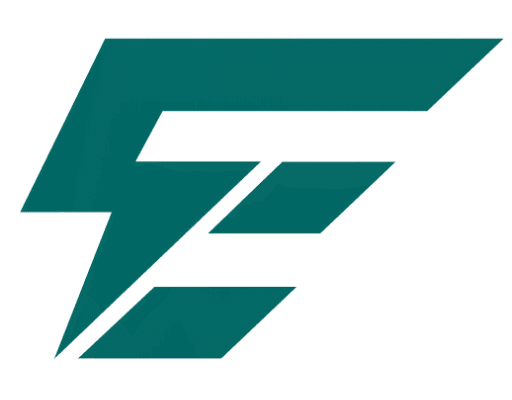For anyone who is involved in the field of electrical engineering, power systems, or any related area, it is of utmost importance to understand the differences between a rectifier and a converter. Although these two terms are commonly used interchangeably in casual talk, they play different roles in the electronics world. If you are designing a power supply system, looking for electrical troubleshooting problems, or maybe just going through the basics of electrical components, knowing converters and rectifiers function can be a great advantage for you. This article goes into the concepts of these devices, their main function, how they operate, and what exactly distinguishes them one from another, so you can apply such practical knowledge with confidence. Stick around! We will be simplifying these technical terms and explaining their part in the modern power system in the next sections!
Fundamentals of Rectifiers and Converters
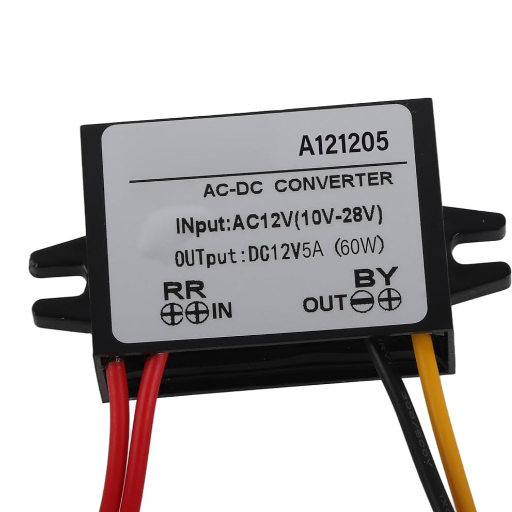
Rectifiers and converters, essential components in electrical systems, are the first of their kind to produce direct current (DC). Consequently, the supply of DC devices or the process of charging batteries involves using a rectifier to convert alternating current (AC) to DC. The rectifiers are of several types, such as half-wave, full-wave, and bridge rectifiers, each designed for specific purposes.
On the other hand, converters transfer electricity from the source in one form to the destination in another form, such as from AC to DC, DC to AC, or even by changing the voltage level. They are widely employed in power supplies, renewable energy systems, and electronic devices. The significant difference between them is that while rectifiers are committed to converting AC to DC, converters do the same and much more to cater to various applications. Such a grasp of the fundamentals shall result in wiser choices for selecting the most suitable equipment in any electrical setting.
What is a Rectifier?
In electronics, a rectifier is a device that converts alternating current (AC) into direct current (DC), a process known as rectification. The AC to DC conversion is indispensable when devices require a continuous and unidirectional current for proper operation. A rectifier is the most common component of the power supply of electronic devices and ensures they receive the DC voltage necessary to operate correctly. They are available in different forms, with the most common being half-wave, full-wave, and bridge rectifiers, each having different efficiency and circuit designs. New rectifiers are almost always being built with semiconductor diodes or thyristors that offer the same high-quality and efficient performance. Thus, their role in shaping electricity for various applications highlights their importance in the fields of industry and consumer technology as well.
What is a Converter?
A converter is typically an electrically powered machine that transforms power from one form to another, optimizing power parameters for specific applications or loads. Converters come in various types, such as direct to alternating current (AC) converters, alternating to direct current (DC) inverters, and direct to direct current (DC) converters, each having its own unique purpose. They are indispensable in power management and are extensively used by businesses, as they help ensure the perfect blend of power supply and electronic devices. It is through them that power sources and electronic devices can be connected appropriately. For example, in the case of portable electronic devices, the DC-DC converters are critical in regulating the voltage level.
In contrast, the AC to DC converters are needed for the simple application of a laptop to a charger. Recently, there has been a tendency to use modern converters with new technologies due to their higher efficiency, reduced energy loss, and better performance features. As a result, they are now integral to our daily electronics and the industrial market, where even the most extensive industrial systems require them to run smoothly.
Key Differences Between Rectifiers and Converters
| Parameter | Rectifiers | Converters |
|---|---|---|
| Function | Converts AC to DC | Converts one form of power to another |
| Input | Alternating Current (AC) | AC or DC |
| Output | Direct Current (DC) | AC or DC |
| Primary Usage | Power supplies for DC devices | Voltage regulation, frequency change |
| Types | Half-wave, Full-wave, Bridge | AC-DC, DC-DC, DC-AC, AC-AC |
| Efficiency | Lower compared to converters | Generally higher with advanced designs |
| Energy Loss | Higher due to heat generation | Lower with modern technologies |
| Complexity | Simple circuitry | Complex depending on functionalities |
| Application in Electronics | Basic DC powering needs | Power management and multiple uses |
| Example Devices | Battery chargers | Laptop adapters, Solar inverters |
Operational Principles
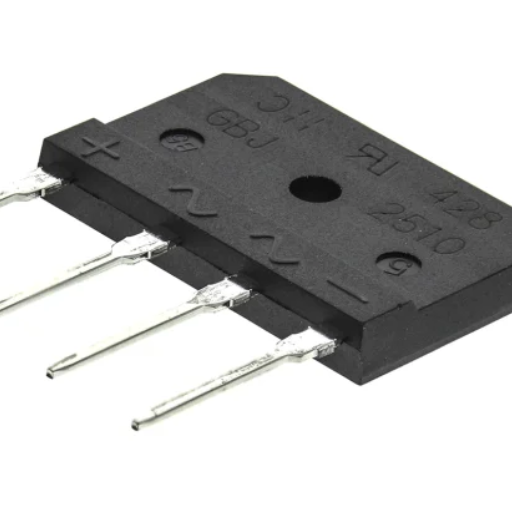
The transformation of power into a form that serves needs is the principle applied in the operation of rectifiers and converters. The rectifier’s core duty is to transform alternating current (AC) into direct current (DC) with the help of diodes, ensuring current flow in one direction only. It depends on the type of rectifier engineering — half-wave, full-wave, or bridge type — whether the AC input is converted partially or fully per each cycle.
Converters, however, do the opposite operation, i.e., they transform electrical power from AC to DC or vice versa and also control the voltage. With the help of power electronic components and control systems specialized for specific inputs and outputs, the converters accomplish this. By incorporating efficient designs into the system, converters enable power delivery optimization for a wide range of applications, from renewable energy systems to electronic devices.
How Rectifier Circuits Work
Another function of rectifiers is performed through rectifier circuits, which convert alternating current (AC) into direct current (DC), a process that is efficient in many electronic applications. Their operation is based on the use of diodes, which are semiconductor devices that allow the passage of current in one direction only. The most elementary rectifier is the half-wave rectifier that employs a single diode to block one half of the AC waveform and therefore provides a pulsating DC output. When it comes to full-wave rectifiers, however, they have multiple diodes on board to endure both halves of the AC waveform and thus produce a more stabilized DC signal.
Commonly, a typical alternative used for the production of D. C. is the Rectifier approach, which generates a ragged signal that is later refined by filter elements like capacitors or inductors. The idea is to get rid of harsh changes in the signal and, in this way, make the D. C. output of the Rectifier more and more stable and predictable. This is how the power converters used in modern electronics and industrial systems are fed.
Understanding Converter Circuits
Modern electrical engineering is not complete without converter circuits, as these are key elements that convert electrical energy from one form to another according to the requirements of a specific application. These circuits can be broadly classified into AC-to-DC converters, DC-to-AC inverters, DC-to-DC converters, and AC-to-AC converters. Different categories fulfill different requirements, like voltage regulation, frequency conversion, or power factor correction. The advancements in power electronics, which include improving the power efficiency, have resulted in very efficient converter technologies. Technologies like pulse width modulation and devices made of silicon carbide offer higher performance in terms of efficiency, thermal management, and durability. Consequently, these converter circuits are becoming integral to various application fields like renewable energy systems, electric vehicles, and industrial automation. This not only shows their importance but also the trend towards a sustainable and technologically advanced future.
Rectification Process Explained
Rectification is the most basic process in electronics, meaning the conversion of alternating current (AC) to direct current (DC). It is made possible by devices called rectifiers that are the heart of power supplies and signal demodulation systems. As one of the latest devices, the rectifier industry has developed materials like silicon and gallium nitride to enhance overall efficiency and minimize power losses. Modern rectifiers function by optimizing the use of both halves of the AC cycle, enabling them to deliver smoother and more stable DC output compared to half-wave rectifiers, as seen in full-wave rectifiers.
Recent technological advancements have also integrated smart control methodologies, allowing adaptive rectification suited for varying input conditions. Methods such as synchronous rectification that employs MOSFETs rather than diodes have been able to reduce voltage drops and increase energy efficiency vastly. The new technologies and methods are very important in consumer electronics. Still, they are also a big issue in data center power, renewable energy grid integration, and electric vehicle reliability.
Electrical Characteristics
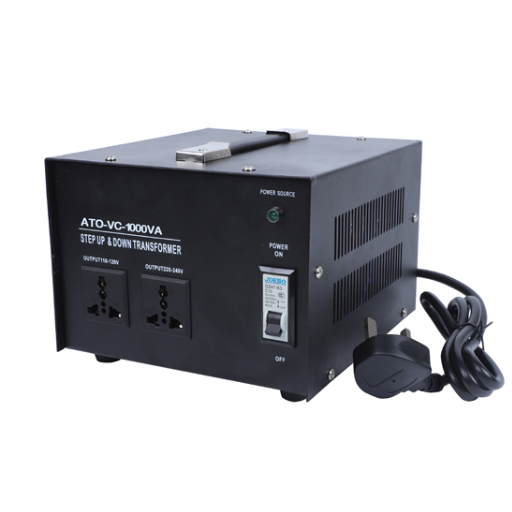
Efficiency: Modern power rectification systems are very efficient, with some systems even capable of surpassing the 95% threshold. Although synchronous rectification and improved circuitry design were mentioned, they were only a few reasons for the high efficiency.
Voltage Drop: MOSFET-based power supply systems have dramatically reduced voltages while simultaneously increasing energy transfers compared to traditional diode-based systems.
Power Density: High power density is a critical feature of the latest technologies, enabling smaller designs with equivalent performance, which are most desired for applications in portable devices and space-constrained systems.
Thermal Management: Enhanced heat dissipation techniques maintain consistent performance under load, ensuring reliability and durability in various operating conditions.
These characteristics highlight the advancements shaping the performance and versatility of electrical power systems across multiple industries.
Voltage and Current in Rectifiers
A rectifier converts electricity from alternating current (AC) to direct current (DC), making it a crucial and indispensable component of electrical and electronic systems. The properties of voltage and current in rectifiers are totally dependent on the type of rectifier, load situations, and the layout of the circuit.
For half-wave rectifiers, only one half-wave is utilized, creating a lower average output voltage and current. The full-wave rectifiers function with the help of either a center-tapped transformer or a bridge configuration. This setup utilizes both halves of the AC signal, providing high efficiency and a smoother DC output. Moreover, the ripple frequency of the full-wave rectifiers is double the supply frequency of the AC, thereby reducing the filtering requirements.
The manufacturers of modern rectifier systems are using the latest semiconductor materials and designs to ensure minimal power dissipation, increased efficiency, and reduced size. In addition to this, the peak inverse voltage (PIV) ratings and the current-carrying capabilities of the diodes are crucial in determining their applicability in different fields of technology. This could range from small-sized electronics to big industrial power systems.
Voltage and Current in Converters
Compared to other electrical equipments, the voltage and current are the most crucial quantities during the operation and performance evaluation of the converters. Converters must be constructed to effectively handle the given voltage ranges, ensuring the output remains consistent and reliable for the load applications. High voltage levels are characteristic of the converter and are used mainly in the industrial sector for the efficient transmission of power over long distances. On the other hand, low-voltage converters are frequently seen in household and personal electronics devices.
The current capacity of a converter is the main feature that shows its ability to manage load requirements without getting overheated or losing efficiency. The improvements in power electronics have made it possible for modern converters to carry increasing current loads while becoming more compact. Some of the significant, game-changing innovations, such as SiC and GaN wide-bandgap semiconductors, not only make it easier to meet electrical conditions but also enhance thermal management and improve the efficiency of converters. Among the many possibilities opened up by these innovations is the operation of converters in renewable energy systems, electric vehicle charging stations, and data centers, where accurately regulating voltage and current is critical for optimal performance.
Applications in Modern Electronics
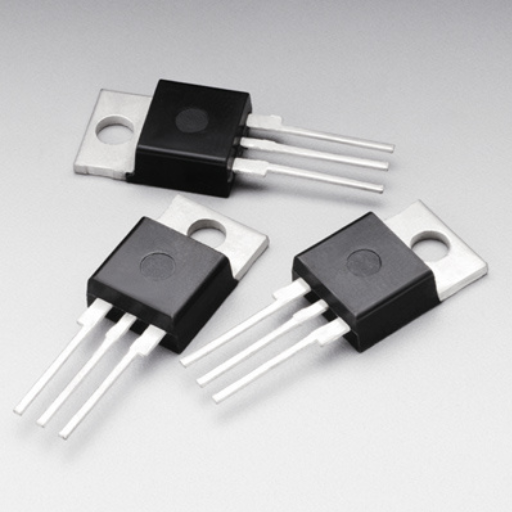
In modern times, everyday electronics rely on power converters to transform energy, which is one of their primary uses across various fields. To illustrate, these devices are the primary component in renewable energy systems, responsible for converting and controlling energy from solar panels and wind turbines to make it compatible with the grid. They are used in electric vehicle (EV) charging infrastructure for efficient and safe power delivery management. Also, data centers are improved by using the most energy-saving and stable power converters that will provide a reliable energy supply for servers and storage. For that same reason, it will reduce downtime and improve energy consumption. These examples exhibit the essential part played by this technology in energy conservation and system reliability.
Rectifiers in Consumer Electronics
Rectification is the process by which an alternating current (AC) is transformed into direct current (DC) through a rectifier. The working principle that most modern electric gadgets are based on is that they can operate using DC as their power source. To convert incoming power into a workable and safe DC format, mobile phones, laptops, and tablets rely on rectifiers built into their chargers or internal circuits. In the same way, electrical appliances like television sets, gaming consoles, and sound systems also need rectifiers to be operational with stability and efficiency. Among other things, acceptance of rectifier technology innovation has led not only to miniaturized and improved applications but also to the overall connected electronic gadgets’ good performance and portability. Due to advanced semiconductor materials and design, rectifiers continue to improve in efficiency and reliability for consumer electronics as they develop.
Converters in Industrial Machinery
Converters have taken a significant position in the modern industrial equipment system, as they convert electrical energy into the required form based on operating conditions. Typically, these devices power motor drives, welding machines, and heavy-duty cranes by controlling voltages, currents, and frequencies to specific levels. The advancement in the field of power electronics has led to the development of high-efficiency converters that not only minimize energy consumption but also reduce heat production, thus upholding the sustainable nature of industrial processes. To illustrate, premium variable frequency drives (VFDs) have now achieved their goal of optimal motor performance through converters, enabling the industry to operate with greater flexibility and economy at a comparable cost. Furthermore, the incorporation of digital technology and IoT systems into the converters will make possible real-time monitoring of the devices, thus helping in the diagnosis of the need for maintenance before breakdown and also in the prevention of undue extended run outages during the industrial applications.
Real-World Examples of Rectifiers and Converters
One of the many ways rectifiers and converters are used is in renewable energy systems, such as solar power installations, where they are genuinely the most essential elements. They convert the power generated by the solar panels, which is in the form of direct current (DC) electricity, into the standard alternating current (AC) used by most homes and industries. The converted AC power is stored in batteries as DC power using rectifiers and inverters. After the DC is converted back to AC for the appliances, the power is used, minimizing energy usage as much as possible.
Rectifiers and converters are also very important in the field of electric vehicle (EV) electronics. Converters supervise the correct operation of the electric vehicle by controlling all charging actions. DC-DC converters ensure that the EV’s battery and motor receive the proper voltage, enhancing overall performance. During acceleration and braking, customers do not experience discomfort due to power fluctuations. High-performance rectifiers can also be an essential part of the battery charging process because they provide very high and efficient power transfer.
In addition to that, thyristor-based converters are used in manufacturing plants, such as steel plants, to control the speed of motors in production lines. These converters ensure strict control through semiconductor rectifiers and converters, while the motor control loop must be closed digitally.
Significance in Power Systems
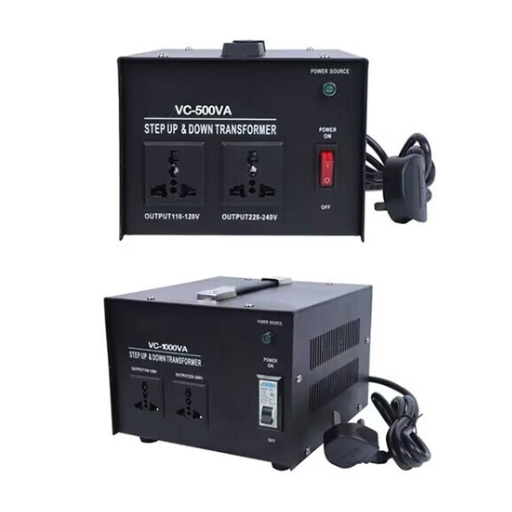
Modern power systems would not function without the help of rectifiers and converters, as these devices maintain power conversion and stability through efficient operations. The most common use of such devices is converting alternating current (AC) to direct current (DC) in circuits like renewable energy installations. This is because solar panels, as well as wind turbines, produce DC power. Moreover, most of the time, this DC power needs to be converted back to AC to meet the grid’s standards, ensuring a smooth connection of the installation to the grid. Apart from this, rectifiers also serve as the primary power source for operating sensitive electronic equipment, thereby providing consistent and uninterrupted electrical power. They also play an essential role in both industrial and residential fields, where they regulate voltage and control power flow to maintain efficiency and stability.
Role of Rectifiers in Power Distribution
In the changing world of power distribution, modern rectifiers have an essential role, especially with the increasingly widespread use of renewable energy resources. Rectifiers that are effective and operate with a minimum of energy losses are considered a necessity in converting the power output voltage from solar panels or wind turbines to a steady form of current suitable for grid transmission. Indeed, the use of silicon carbide (SiC) and gallium nitride (GaN) materials on modern rectifiers has the potential not only to decrease power losses but also to make the entire system more energy efficient. Such silicon carbide materials can improve the performance standard of computer systems, but require the development of new fabrication and processing methods nonetheless. Progress has been made, making it significantly less costly, less labor-intensive, faster, more energy-efficient, and responsible for producing the best quality end-product. This will be done using gallium nitride (GaN), performed to the best of its ability. We are moving towards eco-friendly and cost-effective power systems with significant advances in semiconductor technology. In other words, the widespread use of electric vehicles will be achieved not only by lowering the price of the semiconductor chips but also by making them available in more environmentally friendly ways.
Moreover, from both the perspective of power supply and power consumption, it is evident that advanced rectifiers equipped with precise voltage regulation and monitoring features are increasingly used nowadays. They are responsible for the improved performance of load management and for the smooth integration of dispersed power resources. High-speed rectifiers are required to safely and continuously operate large-scale rectifier plants, which are critical departments in both the manufacturing and data centre industries. The development of these technologies highlights the crucial role of rectifiers in power distribution systems for modern society, which rely on a vast amount of power.
Importance of Converters in Renewable Energy
The role of converters is paramount in the integration and destruction of renewable energy resources. Solar panels and wind turbines that produce electricity with direct current (DC) or variable frequencies will need a converter to change the energy to the alternating current (AC) required by the grid. Through the use of the converter, modern technology shall increase energy efficiency by reducing transformation process losses, thus delivering power in a more environmentally friendly way. Besides, with the advent of advanced power electronics, voltage regulation, fault handling, and operational flexibility in renewable power systems have improved. These innovations make converters essential for addressing issues caused by renewable energy intermittency and the expansion of green energy infrastructure to tackle global energy consumption problems.
Future Trends in Rectifiers and Converters
The future of rectifiers and converters is closely tied to the advancement of wide bandgap (WBG) semiconductor materials like silicon carbide (SiC) and gallium nitride (GaN). It is because of these materials that the technology can achieve higher efficiency, more rapid switching speed, and better thermal conductivity, making WBG devices the future choice for power electronics. Moreover, to some extent, the combination of artificial intelligence (AI) and machine learning (ML) in the development and operation of power systems is about to change how converter systems are monitored, how device maintenance is predicted, and how systems are optimized in real-time.
The trend of modular multi-level converters (MMCs) is gaining ground due to their excellent scalability and fault tolerance for application in high-voltage direct current (HVDC) systems. This has seen it as one of the top converting technologies toward more sustainable energy infrastructures. Nowadays, new energy storage methods are often integrated with energy conversion. This process removes energy barriers driven by renewable sources, laying the foundation for more successful energy management through the grid. Furthermore, all the above trends indicate an intense focus on efficiency, sustainability, and integration as the pillars of modern energy infrastructure.
Reference Sources
Comparison between Phase-Shift Full-Bridge Converters with Noncoupled and Coupled Current-Doubler Rectifier
Key Findings: This study compares the performance of phase-shift full-bridge converters using noncoupled and coupled current-doubler rectifiers. It highlights the efficiency improvements and reduced losses achieved with coupled designs.
Highly Efficient Integrated Rectifier and Voltage Boosting Converter
Key Findings: This paper introduces a rectifier design that integrates a negative voltage converter and an active diode. The design achieves high efficiency and compactness, making it suitable for low-power applications.
Frequently Asked Questions (FAQs)
How does a rectifier circuit work?
A rectifier circuit is a device that allows current to pass in a specific direction. It thereby makes transforming AC voltage into DC voltage very easy and quick. The two basic types of rectifier circuits are half-wave rectifier circuits and full-wave rectifier circuits. The circuits can be either rectifier types, center-type, or bridge-type rectifiers to achieve one of the abovementioned classifications. In a full-wave rectifier circuit, the entire AC waveform is used by the circuit. It is done by means of two diodes acting as a pair to give the positive pulses of output, while the other one is controlled to provide the negative pulses. In this way, the output pulses are redirected, and the other half of the signal is converted into negative and thus blocked.
What is the role of a converter in power devices?
A power converter is crucial for power devices because it transforms electrical energy from one form to another, such as converting AC power into DC power. This has to be done for many applications, including charging batteries and providing the correct DC voltage for the operation of electronic circuits. There are also different kinds of converters, such as the ones that can work from DC to DC, meaning they can change the voltage level without changing the type of current. The power converter is a critical component in renewable energy systems. One reason they are so helpful and reliable in off-grid operations and power outages is that they can easily manage electricity flow and connect with energy sources like solar panels or wind turbines.
What is the process of converting AC to DC?
Converting AC to DC is a multi-step procedure and one of the main ways to accomplish this is by using a rectifier. Firstly, the AC voltage from an AC source is brought to the rectifier circuit, where diodes conduct current in the direction of one side only. This causes a pulsed DC output, which still has some AC ripple at this point. In order to get a purer DC output, using extra components like filters or voltage regulators may be necessary. This change is significant for the power supply of DC devices, as they require a voltage level that is both consistent and stable. Knowledge of this process is invaluable for anyone working on providing power to electrical instruments and machines.
Can a rectifier convert AC power to drive electric devices?
Absolutely, the rectifier is an electrical component responsible for the conversion of AC power to DC power. This conversion is essential for supporting the drives of the electric apparatus that need a constant DC supply. Many other modern appliances and electronic devices run on DC power, which explains why rectifiers are indispensable in their power supply. A rectifier is a device that uses a simple full-wave bridge rectifier to efficiently convert the AC voltage of the input into a usable DC voltage. This transformation ensures that the recipient devices will receive the necessary power, minimizing the risk of damage. As a result, rectifiers are absolutely indispensable in the field of electric power-consuming devices, as well as in the corresponding electronic devices.
